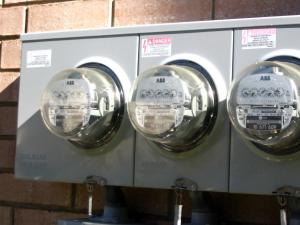
The economy has forced most if not all Americans to seek ways to reduce non-essential and otherwise variable expenses at home. A new opportunity has emerged in recent years with the advent of affordable lightweight residential energy management systems that can be controlled either in the home or remotely.
Today’s dashboard touch panel-controlled “smart” energy management systems enable home-based users to easily view and reduce their resource consumption in real time with the mere touch of a button, resulting in significant utility bill savings each month. Although extraordinarily feature rich, modern residential energy management and control systems are now far more cost effective to deploy and deliver a rapid return-on-investment.
Such advancements have generated enormous marketplace demand among “green thinkers” seeking proven and affordable ways to be environmentally friendly and, in doing so, save money. Here are 5 key issues when considering a residential energy management system:
- Ensure the solution specifically focuses on the HVAC system - Most energy management products on the market today are too complex to appropriately leverage or too simple to achieve the desired goal. To maximize your energy savings, minimize related costs and realize a fast payback, seek a product that specifically focuses on the HVAC system - the largest controllable source of energy drain and, thus, the quickest and easiest way to produce material savings. Additional sensors to monitor and control other sources of energy use – such as lighting, security, and home office and entertainment equipment - can always be integrated into today’s flexible, scalable products.
- Seek a product that offers both in-home and remote measurement and control - Not only should an energy management system be controllable on-site in the home, but also remotely. By connecting to the installed system via the Internet, manufacturers offering remote capabilities allow residential users to monitor a home’s real time energy consumption and ensure that temperatures do not go beyond the pre-set parameters. Such monitoring also enables the immediate flagging of consumption swings and other anomalies, which can indicate HVAC and other mechanical malfunctions early on. Ultimately, remote monitoring better assures that the installed product is being used to the best of its capabilities and is facilitating the expected energy and cost savings.
- Opt for a quick-install system with low initial fees and ROI in less than 12 months - The best residential energy management systems on the market today can be delivered and installed for $750 or even less. When one considers a monthly residential utility bill of $300, even a 15% monthly energy savings would provide a return-on-investment in well under 18 months. Some companies also offer flexible payment terms, such as a low upfront payments and a monthly service fee. It’s also important to ensure the system can be installed rapidly to further mitigate up front service fees.
- Obtain a product with a robust yet user-friendly core feature set - In addition to graphical viewing of real-time and historical resource consumption, today’s best-of-breed energy control products provide a robust feature set that, among other capabilities, allows users to establish thermostat heating and cooling limits and set points for different times of the day, and offer an automated “peak shaving” option designed to reduce consumption during peak demand periods. Such advanced systems can also readily block unauthorized access and changes to the settings, and allow enabled users to view and alter the settings and presentation information via the Web, smart phones, or the in-home display.
- Ensure the solution is proven with an established track record of success - When evaluating a product, it is imperative that the manufacturer can point to a critical mass of real-world, not trial, installations in the field, and will allow you to speak with actual customers. When evaluating competing products, be sure to check references not only about the quality and user-friendliness of the product, but also the ease of installation, the hard cost savings realized (and how quickly), and the level of post-deployment support they receive from the manufacturer and/or installer.
By using these 5 tips as a guideline, residential users can best assure they’ll secure a well-rounded and cost effective energy management system that will reduce their carbon footprint and energy consumption while delivering notable monetary gains.
Gus Ezcurra is CEO of Advanced Telemetry, developer of the industry-leading EcoViewTM smart energy and resource management system for business and residential applications. He may be reached through the company’s Web site located at www.AdvancedTelemetry.com or via email at info@advancedtelemetry.com.

